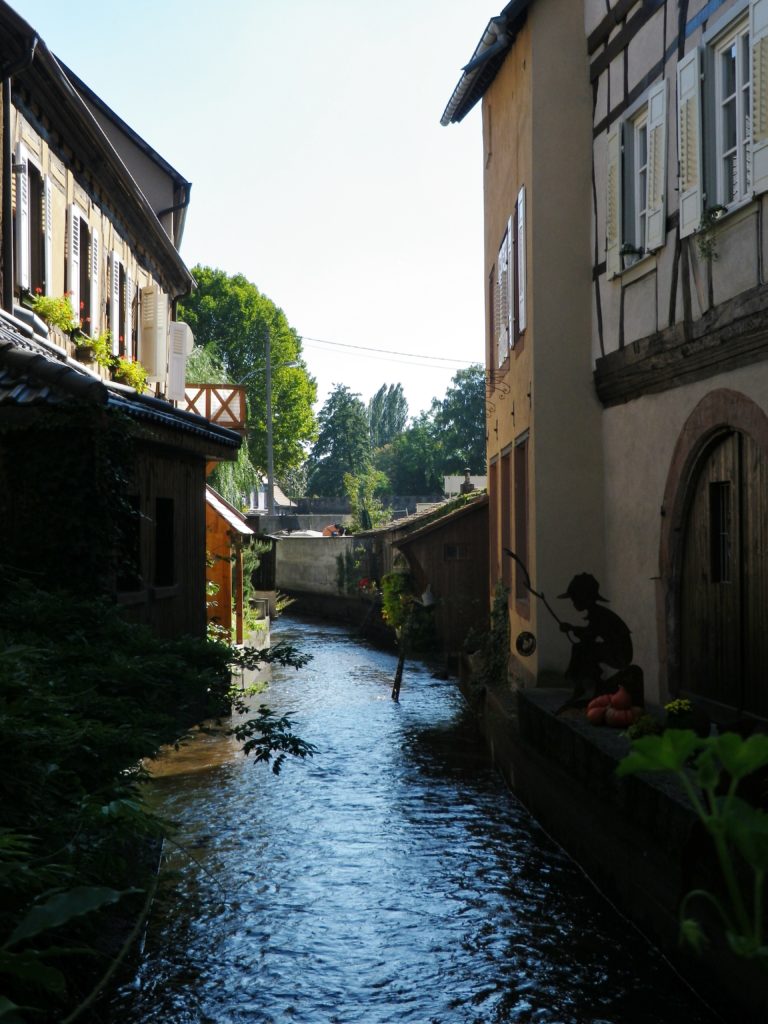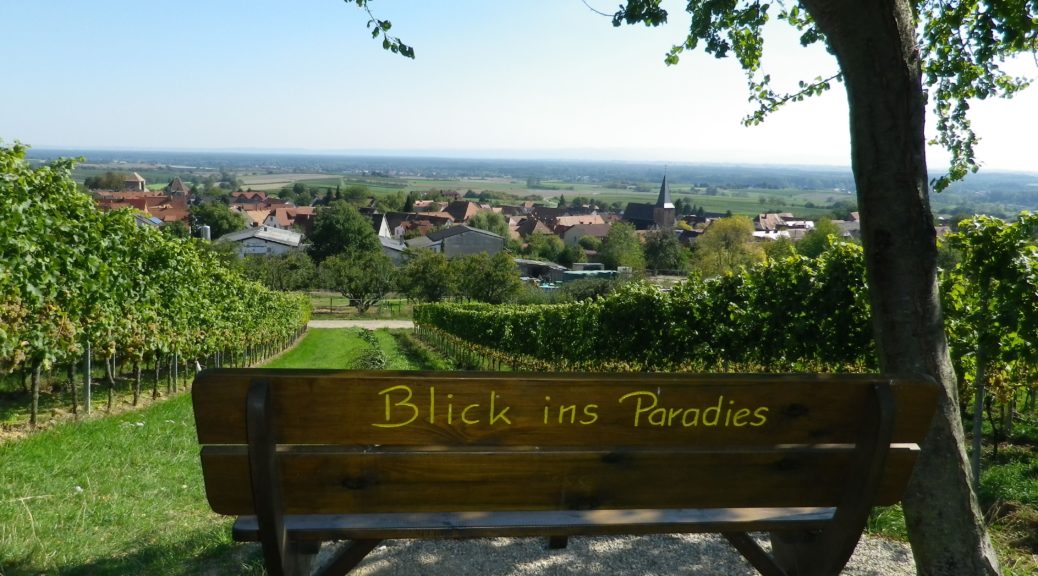The love of wine knows no boundaries, and vines know no political borders. Vintners on both sides of the French-German border in this northeastern-most corner of Alsace tend the land together, owning, or working, parcels on both sides, producing wines, and sharing a growing passion for quality wines. A wine-themed circuit hike here, developed by French and German regional and local tourism authorities, likewise shows a spirit of cooperation. This has produced excellent results, both in wine education, and in an easy, family-friendly hike through an historic French town, a quaint German village, and of course, vineyards.
This hike crosses the border between France and Germany twice. But before there was a border, there were vines. These vineyards, and many others both north and south of the border, belonged to the abbey in Wissembourg, in Alsace. And even though the abbey and the borders (for all practical purposes) have gone, the vines remain. Yet another reminder of the crucial, regional role abbeys and monasteries played in reviving viticulture in these areas after the fall of the Roman Empire.
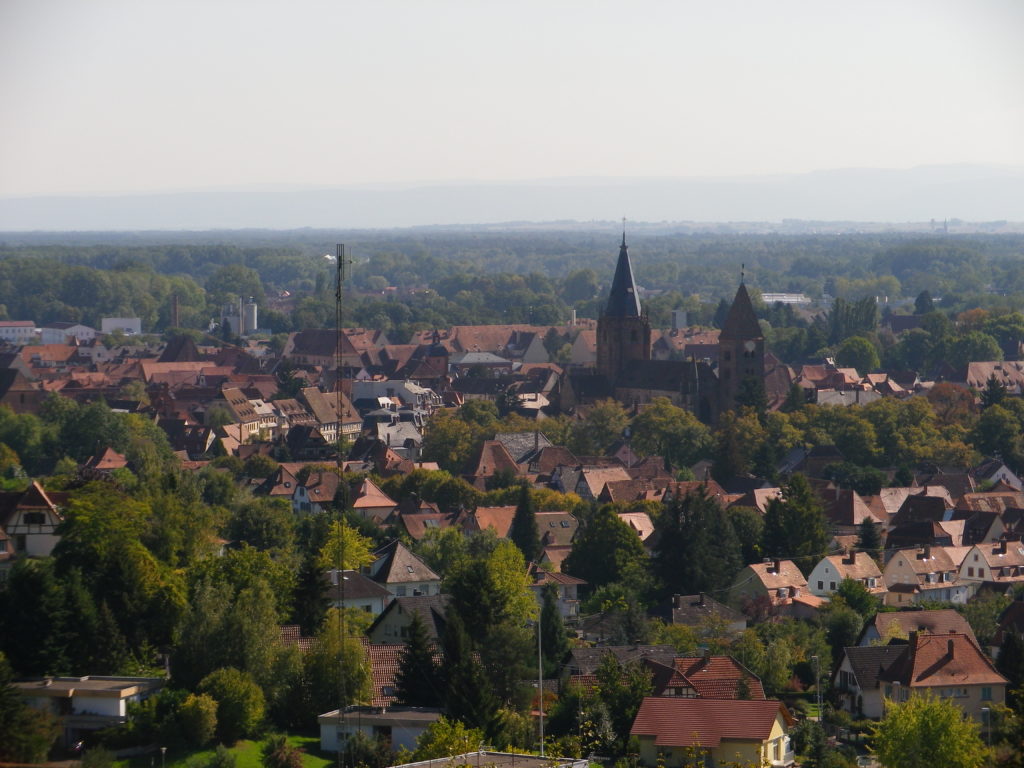
Starting the hike near the great abbey church provides an opportunity to visit it and learn its history. This foundation was begun in the seventh century, funded by the Merovingian King Dagobert II. The Merovingians, and later, Carolingians, were great benefactors of monasteries, abbeys and convents in the Rhine Valley. In addition to founding them, they often endowed them with additional lands thereafter. Hence a foundation such as Wissembourg could end up with discrete vineyards as far north as Edenkoben, Germany. The hike follows the Lauter Creek past the church and out of town, toward the vineyards on the Sonnenberg. Once part of the abbey, now, as then, the Sonnenberg, as its name implies (Sunny Hill), is famed for its sun-filled aspect.
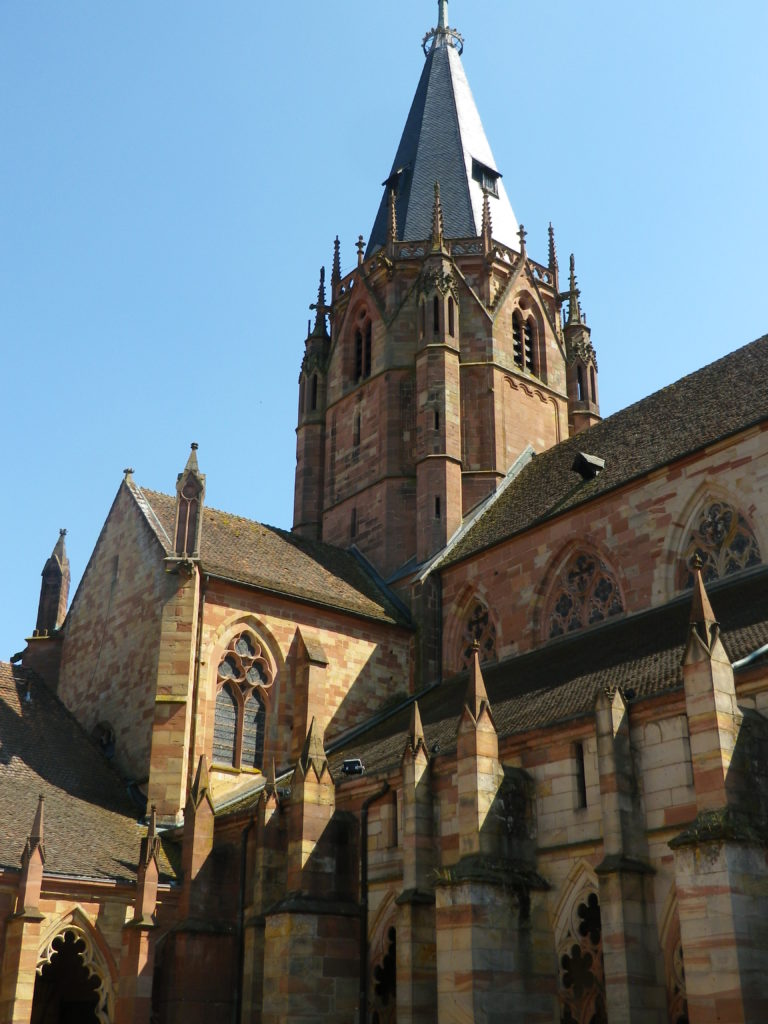
As the trail steeply climbed up from Wissembourg, it passed through a stretch of wood above the Kammerberg vineyard, and then approached the named vineyards of Raedling, Saint Paul and Strohlenberg, lying side by side in a peaceful corner overlooking the southern Palatinate, and across the Rhine valley. Contiguous with the border is the start of the next named vineyard, the Sonnenberg, and a wine education trail. This was the first ever German wine education trail, and this circuit follows along part of it.
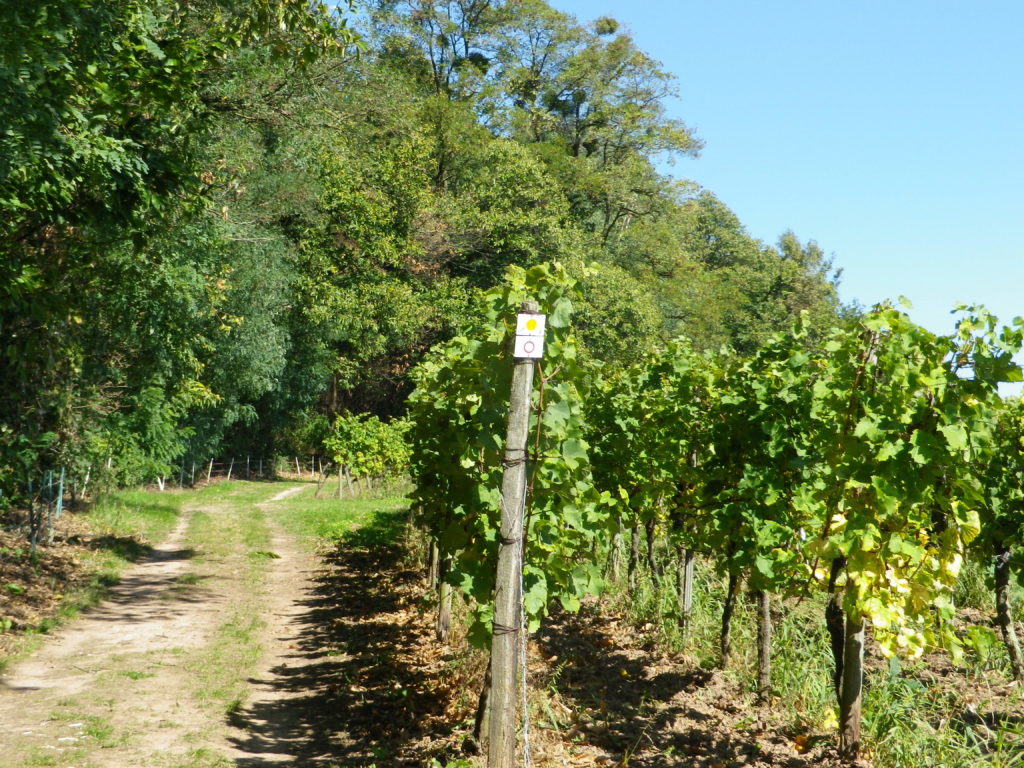
Close to the border, the keep of Chateau Saint Paul (Pauliner Schloss, in German) is just visible above the trees set in the midst of this vineyard area. Beyond the castle keep, the German village of Schweigen-Rechtenbach begins to appear. The impressive tower rising above the uniformly red roofs is the famous Deutsches Weintor, or German Wine Tower. Dating only to the 1930s, this medieval-looking tower marks the start (or end) of the famous German Wine Road. Nowadays, it serves several functions: restaurant, wine bar and shop, iconic tourist spot and vantage look-out point, ideal for photographs of the whole area. You can see for miles, but ironically, can’t see the trail’s start point: the towers of Wissembourg’s abbey church.
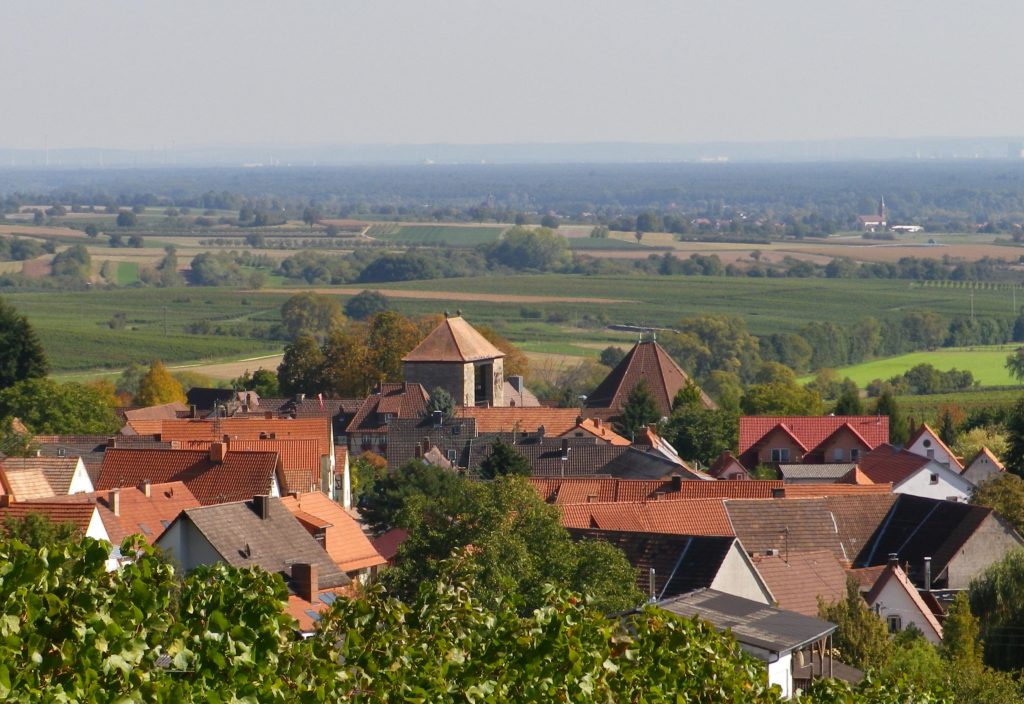
As the trail heads south towards France, it leads through Schweigen, a charming village devoted to wine-making. Passing by several restaurants and family-owned wineries, there are certainly lots of opportunities to buy the local product. Many of these wineries have vines on the famous Sonnenberg, and their wines are sometimes labeled as “cru”, following the French fashion.
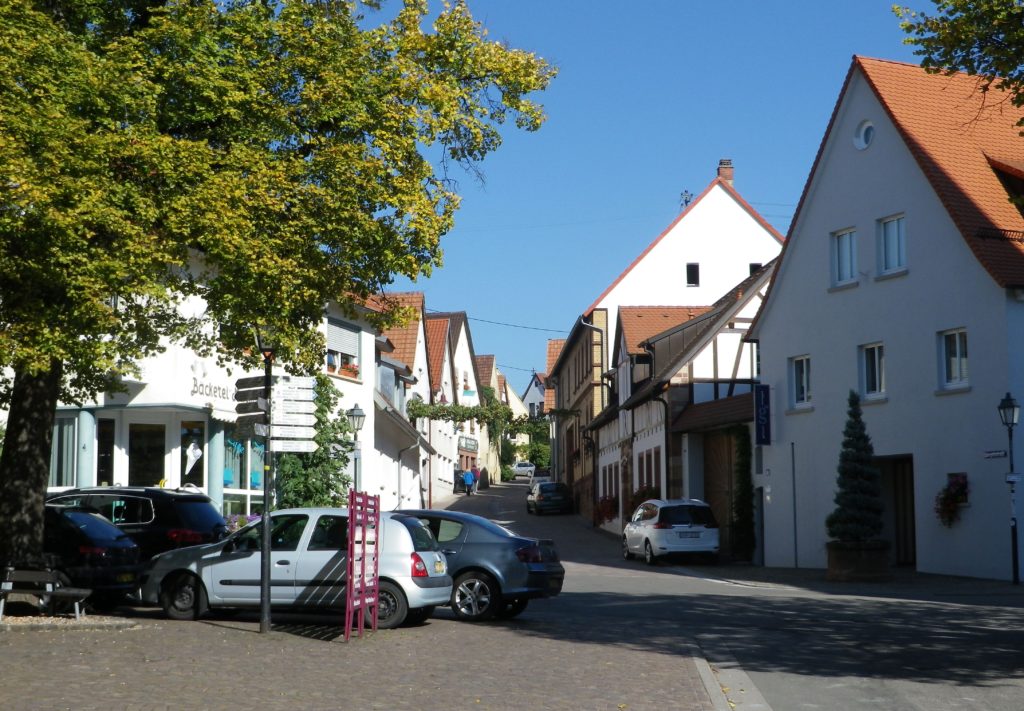
The circuit begins to close once past the last of the Schweigen wineries. Coming upon the outskirts of Wissembourg through vineyards, the trail follows through and along the walls of the once fortified town. (Being right on the border, this town and nearby villages unfortunately saw military action during the Napoleonic era, half a century later during the Franco-Prussian War, and yet again during World War II.)
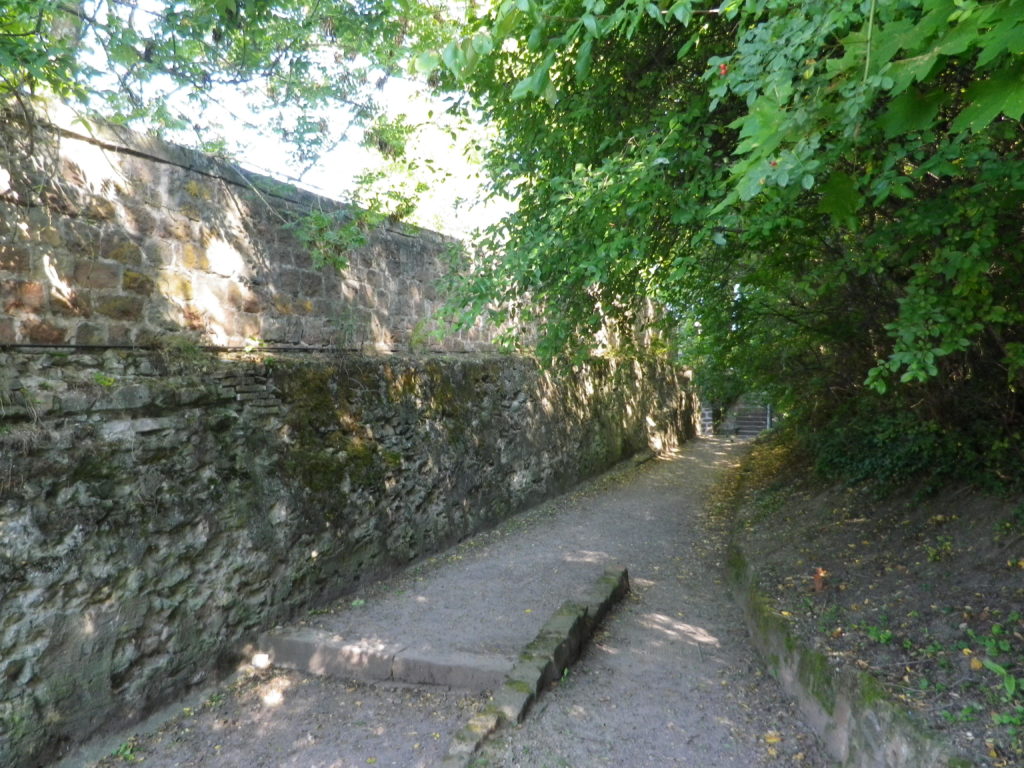
Nowadays, the bustling little town hosts shops and restaurants for tourists, many German, enjoying a convivial day in France. Yet Wissembourg still retains its quiet corners,and green spaces, especially along the course of the Lauter Creek as it meanders through town. As the trail winds through the historic center, it is easy enough to find a café or restaurant to stop at to enjoy the wines of this area, and savor the memories of this great little hike.
